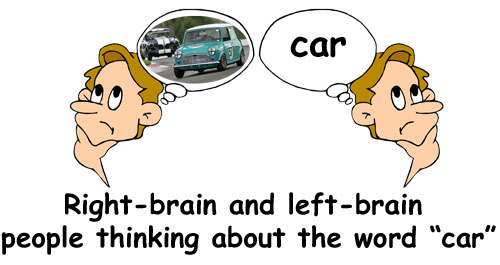
This week we are going to talk about what a dyslexic student needs to learn new skill sets in the classroom and in their personal lives.
In the second chapter of our book “Dyslexia or Being Right Brained” we have listed a five step procedure called THE FIVE STEPS TO LEARNING. (To check out the book click: Dyslexia or Being Right-brained)
THE FIVE STEPS TO LEARNING FOR DYSLEXIC STUDENTS
1. WHY? Why must I learn this? (Purpose)The student must first know WHY it should accept an assignment or do a lesson.
2. WHAT? What do you expect to find in my answer(s)? The student must be trained to take notes, choose appropriate materials, focus, organize and develop answers that present ideas in a logical sequence on the question or topic to be discussed.
3. HOW? How do I present my answers? Orally or written, single words, sentences, paragraphs or essays? How do I write each of these forms? The skills required are the basic rules of grammar, sentence structure, paragraph and essay formats. The student must be shown the full process of these language formats for organizing the ideas and answers either for visual, written or oral presentation.
4. WHEN? When do I start, finish and hand in the assignment? The student must be instructed when to start on the assignment, in class or at home and when it must be finished for correcting or handing in for marking. Without these instructions they don’t understand the time limits involved and may panic without them and may even be unable to do the assignment at all.
5. OUTCOME? What have I learned, how will I use this information in future? The student must perceive the whole picture, its outcome and future applications in lessons or assignments if the student is to do the work successfully.
These are questions that a parent or teacher should ask themselves when presenting a topic of study or project to be done like a science or social studies project, or anything for that matter. The teacher needs to make sure that the instructions are stated in a way that answers these 5 questions.
They refer to how information is best presented to a dyslexic or right-brained student. We can never assume that what appears basic, obvious and easy to understand to us is going to be so to every student in the classroom. In most instances, if the dyslexic student does not get answers to all their questions for an assignment they can be paralyzed into inaction.
Actually this format works well for all students, I’ll go into this in a little bit. To begin with, these questions were created by Karen Hope, the co-founder of the TURNER-HOPE METHOD. In earlier blogs, see Rants and Raves from Dyslexia Victoria Online “The Story of a Dyslexic Mother and Daughter” we have mentioned Karen’s struggles with getting her three dyslexic children taught in the regular school system in California. Her struggles started with Genevieve when she was 7 years old and was diagnosed with dyslexia. For the next 15 years Karen helped her children understand their learning styles and devised the teaching techniques demonstrated in our books.
Karen quickly realized that the right-brained learning style of her children put certain restrictions on how they learned. As is now obvious to any person aware of right-brained or dyslexic issues, the “Big Picture” is of huge importance. We have seen and read that every person who is a right-brained learner needs to see the limits of a task; they need to know what the end result is supposed to look like. They also need to know all the little steps that make up the big picture, which is the purpose of the 5 points listed above.
The over-all purpose of the 5 Steps list is to give you, the teacher or parent, an understanding of what the questions mean that these students are asking after you assign the task. Many teachers we have spoken to are left confused and overwhelmed at the number and manner of questions that some students ask after the teacher has assigned a topic. If you ask yourself if your instructions to the student answer the points of the 5 Steps, chances are that you have presented the assignment in a way that makes sense to the right brained students and the rest of the class as well. Here is an example of a method that worked for me in later life.
While taking some Civil Engineering courses about 10 years ago one of my classes was taught by a former highway maintenance foreman. Even though he was not in any way qualified to be a teacher or professor his class in highway design was one of the least difficult ones because of his “Chalk talk”.
He started the class with a 5 minute explanation of what we had learned the class before, what we were going to do that day, what we were going to learn and how we were going to do the tasks. He had all this information printed on the blackboard too. Unintentionally he had created a lesson format that worked for a right-brained student (me) and the whole class. The rest of the class really appreciated the way he did his classes and he told me that he had started all of his work crews with the same method.
So the lesson for today is all about perceptions, again. It really is hard to blame the teachers of the school systems here in Canada and America, most of the skills they need to recognize various learning issues are not taught very well during their training. And as long as these learning disabilities are dealt with as they have been in the past and up to now it is going to tough for us to deal with the solutions. If you look at the 5 Steps and realize that they are asking us to appreciate what the dyslexic student needs to know then we can be one step closer towards helping these individuals. It is of utmost importance that we not act with impatience or dismiss any of the questions of these students. It really isn’t a lot to ask and as long as the school districts can’t allocate the funds necessary then it’s up to us. Now that is a whole shift of perceptions of what can be done.
Happy Trails!

Howie deGraaf
Editor for Dyslexia Victoria Online







![Reblog this post [with Zemanta]](https://i0.wp.com/img.zemanta.com/reblog_e.png)
 In the last blog chat titled:
In the last blog chat titled: When he started the class, not only did he tell us what we were going to learn that day he also spent a couple of minutes summarizing what we did the class before and told us how today’s lesson was going to lead to the next one. Now that actually fits in with steps 1, 4 and 5 of the
When he started the class, not only did he tell us what we were going to learn that day he also spent a couple of minutes summarizing what we did the class before and told us how today’s lesson was going to lead to the next one. Now that actually fits in with steps 1, 4 and 5 of the









